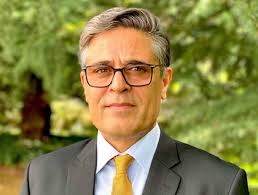PCJCCI chief for utilisation of Pakistan’s coal reserves

Gwadar Pro
Lahore: Pakistan-China Joint Chamber of Commerce and Industry (PCJCCI) President Moazzam Ghurki stressed for utilisation of Pakistan’s coal reserves.
During a think-tank session here at the PCJCCI secretariat, he maintained that coal was most widely used for cheap electricity generation and currently 36 per cent of world’s electricity was being generated through this source.
Ghurki added that Pakistan had large reserves of coal, specially lignite coal, which China had imported for US $8 billion in 2021 from other countries, instead of Pakistan due to the lack of technology and modern methods.
The government of Pakistan should introduce modern technology to facilitate the miners with the latest mechanisms, to work on the coal reserves, he added.
On this occasion, PCJCCI Senior Vice President Fang Yulong said that Pakistan had large reserves of coal, specially lignite coal, which China had imported earlier. Pakistan had its coal deposits in Balochistan, Punjab and especially Sindh, where Thar desert having the 16th largest coal deposits.
He highlighted that owing to global energy insecurity caused due to continuing war between Russia and Ukraine, many European nations had been compelled to revive their decades-old coal-based electricity plants to avoid energy shortages for their respective countries.
In his speech, PCJCCI Vice President Hamza Khalid said that total coal reserves discovered in Pakistan were 185-billion-ton, but the coal mining in Pakistan was facing a lot of issues due to lack of up-gradation of equipment.
“The old methods of mining cause numerous deaths due to suffocation and blasts,” he mentioned.
He added that coal reserves in Thar could go a long way to make Pakistan an energy surplus country with the least reliance on imported fuel for power production.
In his comments, Salahuddin Hanif, Secretary General PCJCCI, said that Pakistan could adopt a safe and balanced approach to exploit its vast coal reserve for power generation with least damage to the environment to overcome energy shortfall without burdening the economy.





